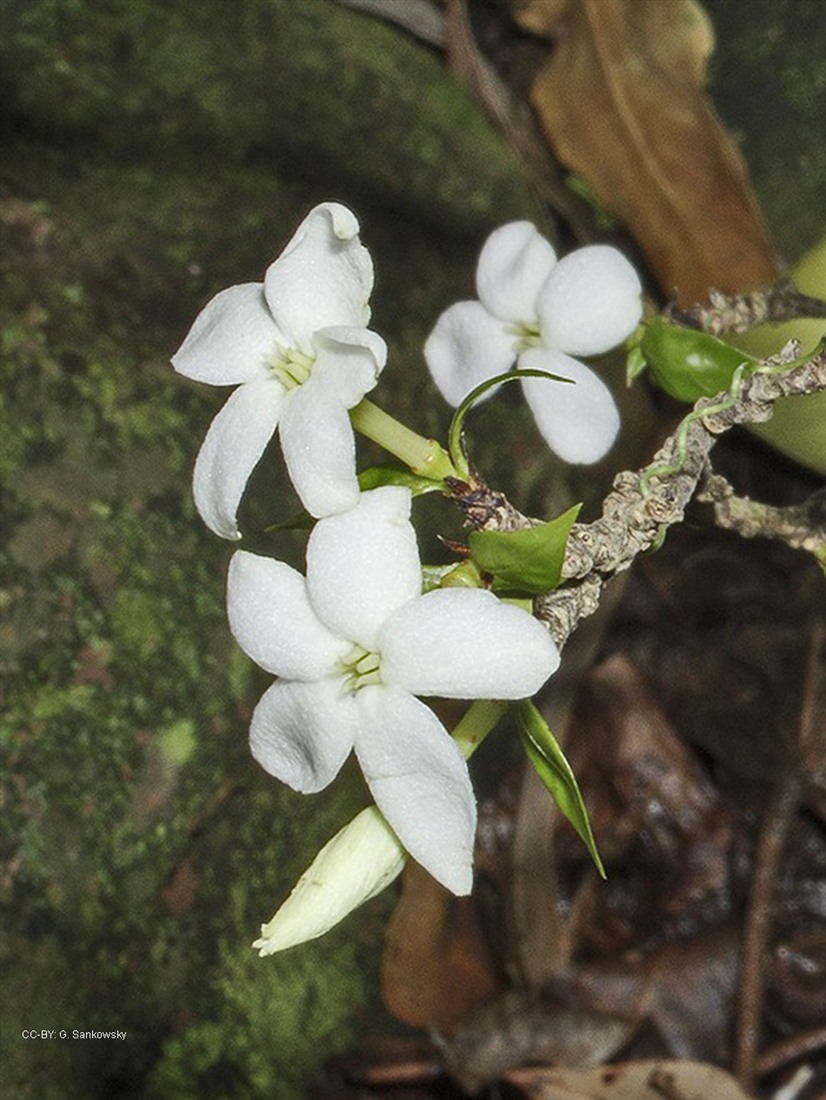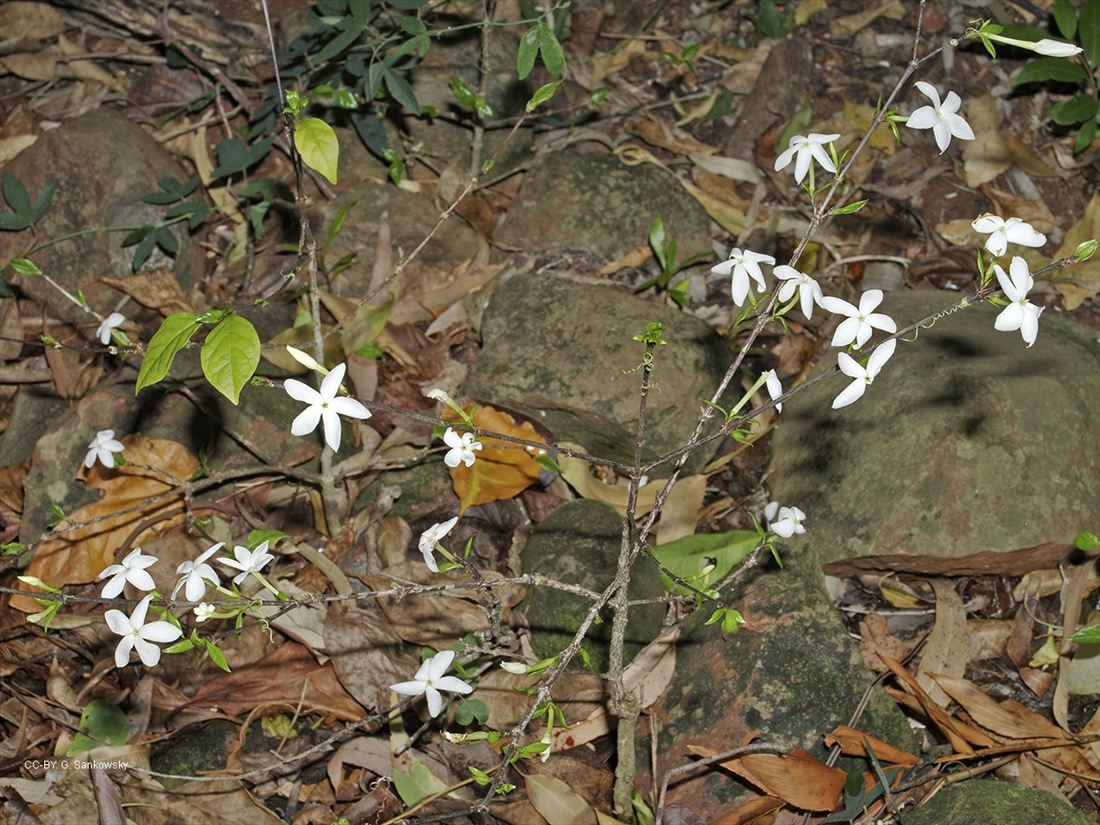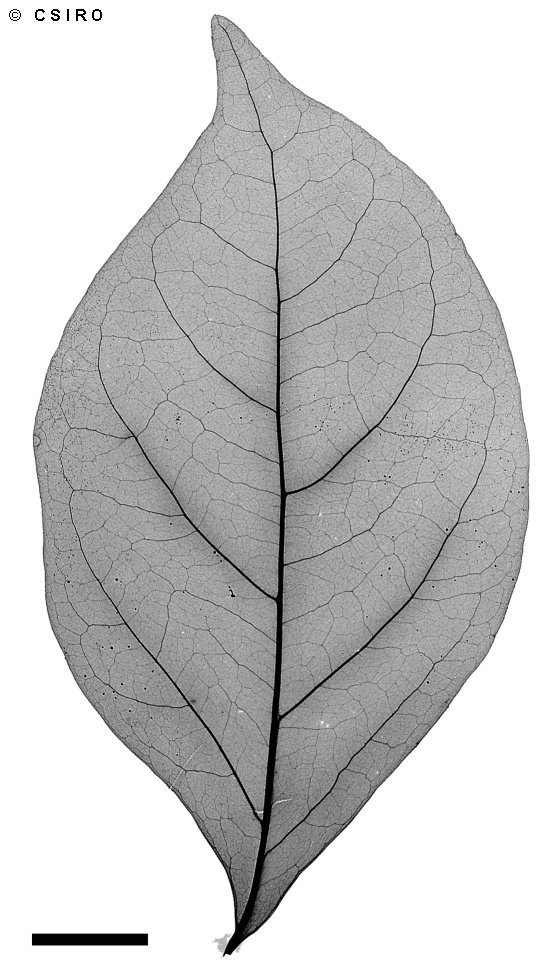Australian Tropical Rainforest Plants - Online edition
Coffea brassii (J.-F.Leroy) A.P.Davis




Davis, A.P. (2010) Phytotaxa 10: 42.
Usually flowers and fruits as a shrub about 1-2 m tall, occasionally flowers when smaller.
Bright orange glands present inside the bracts at the base of the ovary. Calyx (hypanthium) cup-like, lobes reduced to teeth, each with about 2-5 elongated orange glands near the apex. Corolla tube about 8-12 mm long, green, lobes about 9-11 mm long, white. Anthers +/- sessile, attached to the inner surface of the corolla tube but protruding from the orifice. Stigma bilobed.
Fruit black when ripe, laterally compressed, about 7-9 mm long. Calyx remnants persisting at the apex of the fruit. Testa exceedingly thin, endocarp thicker. Endosperm marked by a couple of folds or ruminations. Cotyledons cordate or orbicular, base definitely cordate, wider than the radicle. Cotyledons about 1.5 mm long, radicle about 3.2 mm long.
Features not available.
Occurs in CYP and the northern part of NEQ. Altitudinal range from near sea level to 400 m. Grows in rain forest, monsoon forest and vine thickets. Also occurs in New Guinea.
A deciduous shrub to 3 m tall.
Psilanthus brassii (J.-F.Leroy) A.P.Davis, Novon 13: 183 (2003). Paracoffea brassii J.-F.Leroy, J. Agric. Trop. Bot. Appl. 14: 598(1967), Type: Papua New Guinea, Baroka, Nakeo district, 8 April 1933, L.J. Brass 3473; Holo: BO; Iso: A, BRI. Randia sp. (Coen BH 14378), Australian Tropical Rain Forest Trees, Shrubs & Vines : (2003). Randia sp. (Coen B.P. Hyland 14378), Queensland Plant Names & Distributuon : 183(1997).





